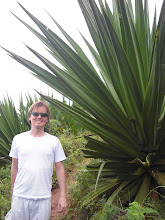
Just purchased a few
Morrocco Method products at the recommendation of the talented and vivacious
Kristen Suzanne. Morrocco Method is a company that makes hair care products which are organic, vegan, AND raw! Their ingredient lists read more like an Audobon Society forest manual than that of a typical cosmetic company. The way their system works is that you're supposed to alternate their 5 shampoos daily and finish with their Heavenly Chi Conditioner. I purchased 2 of their shampoos, the Sea Elements and the Heavenly Chi Shampoo, as well as one bottle of the Heavenly Chi Conditioner. The friendly reps at Morroco Method gave me generous sized samples of the shampoos that I didn't purchase, and I can't wait to try them out.
Let me just say that since I began using their products 3 days ago I can't stop touching my hair because it feels so nice. Seriously, I'm not exaggerating. They are phenomal products! But, before I get ahead of myself, let me just walk you through the whole Morrocco Method experience:
First, there's nothing hippy-dippy about the packaging. The bottles they come in look like any professional hair care product that you'd pick up at your favorite salon. However, what's inside the bottle is drastically different. As soon as you open the cap you get a waft of the scent, which is strong and "herby." Seriously, I don't know any other way to describe it. It certainly doesn't smell bad. In fact, I quite like the smell, but it's very different from the "detergenty" smell of most shampoos. Another important factor to note is that the texture is like grainy mustard and it doesn't lather. As a matter of fact, it doesn't rub into your hair and scalp very easily - it takes some effort. The conditioner is pretty much the same overall experience, although I must say that I could feel the olive oil in it and I actually worried that it would leave my hair looking greasy even after I washed it out, but that didn't turn out to be the case.
What I'm saying is that Morrocco Method makes highly unusual products that are not deleterious to your health or the health of the planet. They will leave your hair looking luminous, perhaps better than with traditional haircare products. However, remember to keep an open mind initially.























